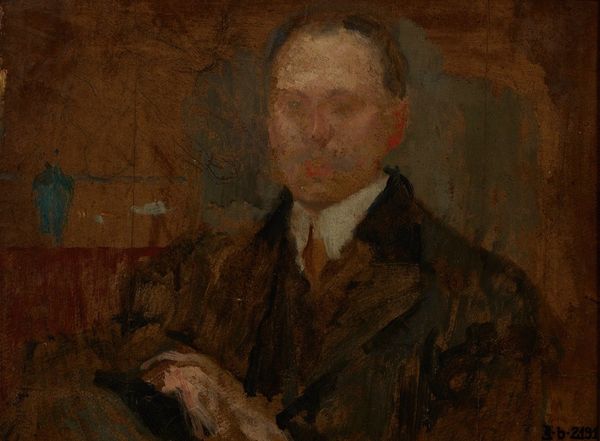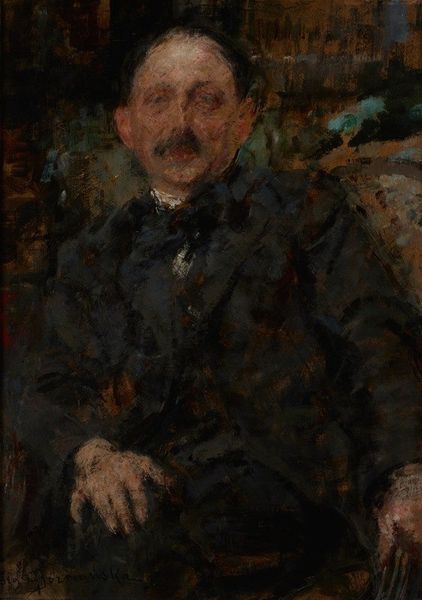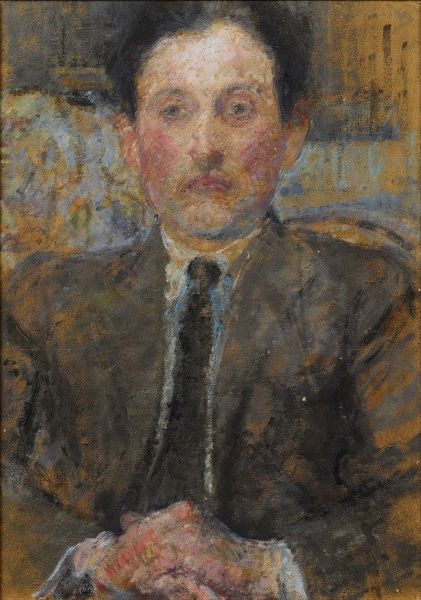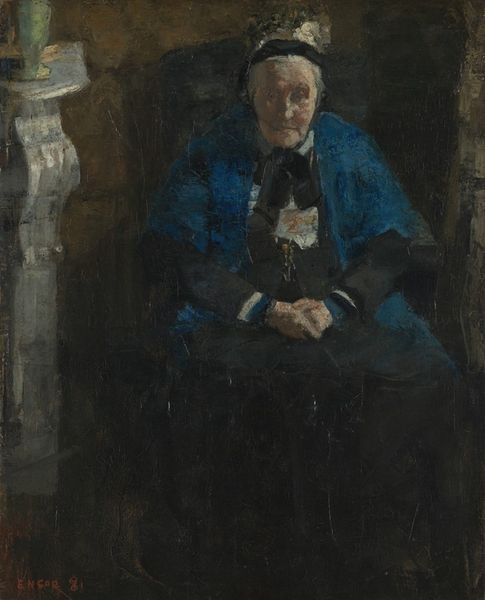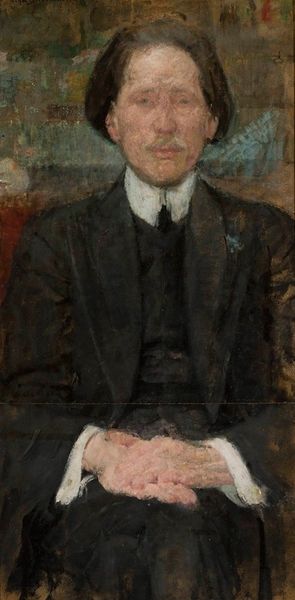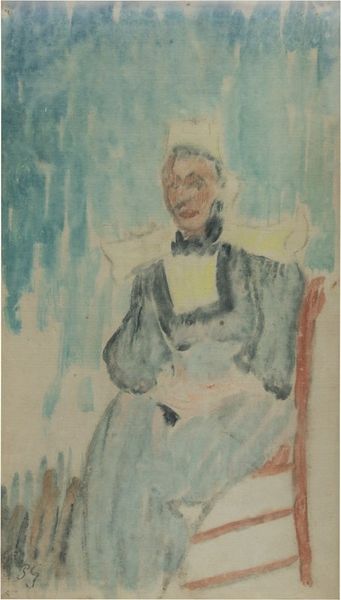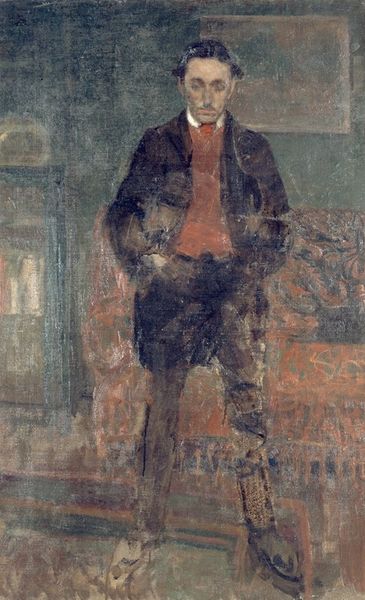
#
figurative
#
charcoal drawing
#
possibly oil pastel
#
oil painting
#
acrylic on canvas
#
underpainting
#
pastel chalk drawing
#
painting painterly
#
watercolour bleed
#
watercolour illustration
#
watercolor
Copyright: Public Domain: Artvee
Curator: Look at this study, completed in 1925 by Olga Boznanska, known as "Study of a Male Figure." The sitter appears relaxed, but his gaze... it’s somewhat unsettling, wouldn't you agree? Editor: The color palette, especially, contributes to that. It's mostly muted browns and blues, giving it this kind of somber, almost melancholic air. You immediately sense a distance, like a photograph faded with time, a moment barely clinging to memory. Who do you imagine this sitter might be, and what do you think the work says about the socio-political status of this figure in 1920s Poland? Curator: It certainly begs a socio-historical reading. Consider the time—post World War I, the reconstruction, and the fluctuating artistic milieu of the interwar period. This could easily be a member of the Polish intelligentsia or perhaps someone aspiring to that status. The suit, although painted with broad strokes, implies a certain degree of formality, maybe even suppressed bourgeois anxieties in that era. There are layers there, and they invite discussion. Editor: What I appreciate is how the brushstrokes become almost abstract at the edges of the canvas, contrasting with the more defined areas of his face and hands. This technique draws us in, even as the ambiguity keeps us at a remove. I also believe Boznanska challenges gender norms through portraying an unidealized form, subtly resisting the male gaze in painting through her portrayal. She seems invested in something deeper than representation itself. Curator: Precisely, and examining her position as a woman artist working in this period helps us frame her aesthetic decisions as choices deeply informed by lived experience and socio-political constraints. The public exhibition of portraiture carried an intrinsic power then—the ability to subtly disrupt patriarchal conventions within the relatively safe sphere of art institutions. Editor: So, Boznanska provides a way into examining not just portraiture but also gendered representation, artistic intention, and audience perception in Polish society between the wars, all contained within these browns and blues. That seems potent for this deceptively simple study. Curator: Absolutely. The power lies in its understatement, urging viewers to look beyond the surface and really question who is being seen and, crucially, who is doing the seeing.
Comments
No comments
Be the first to comment and join the conversation on the ultimate creative platform.
